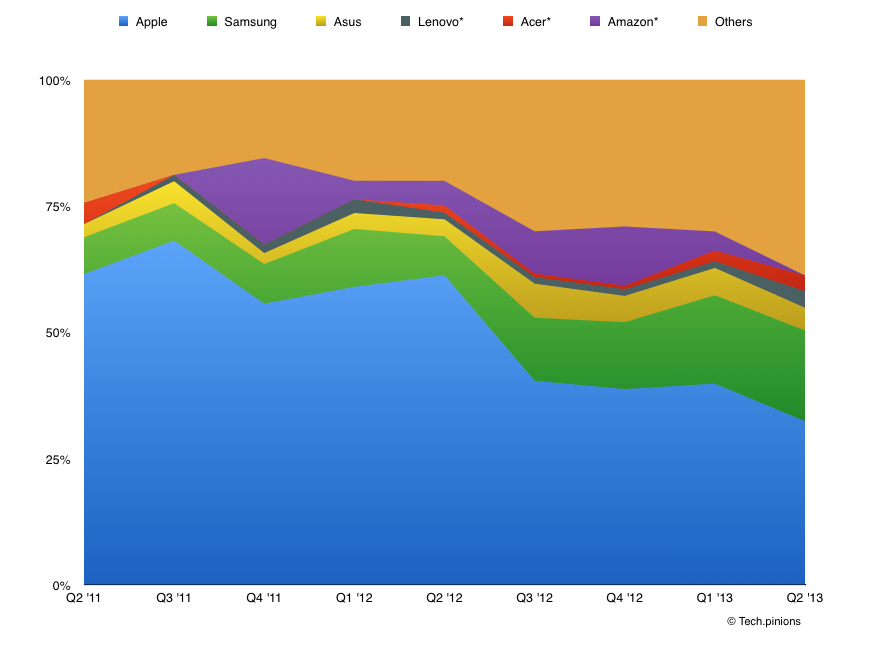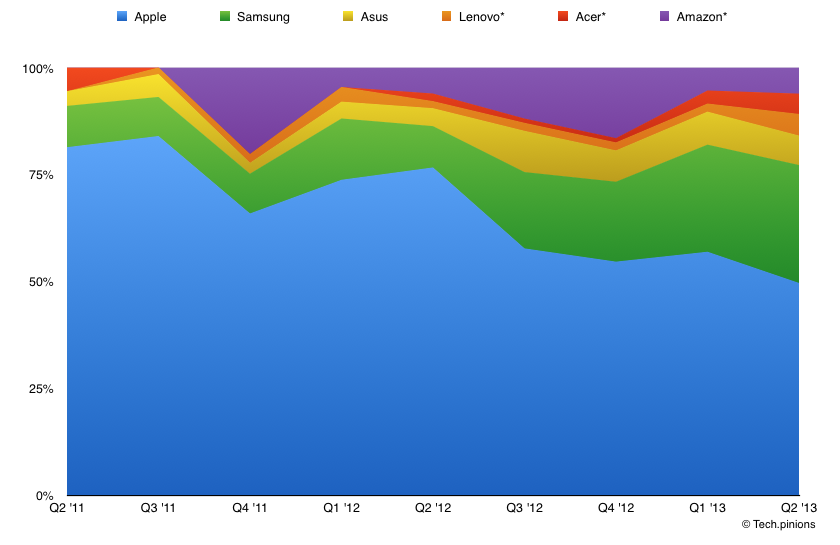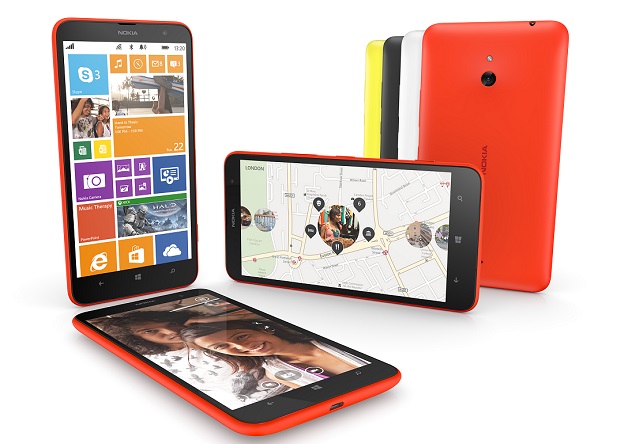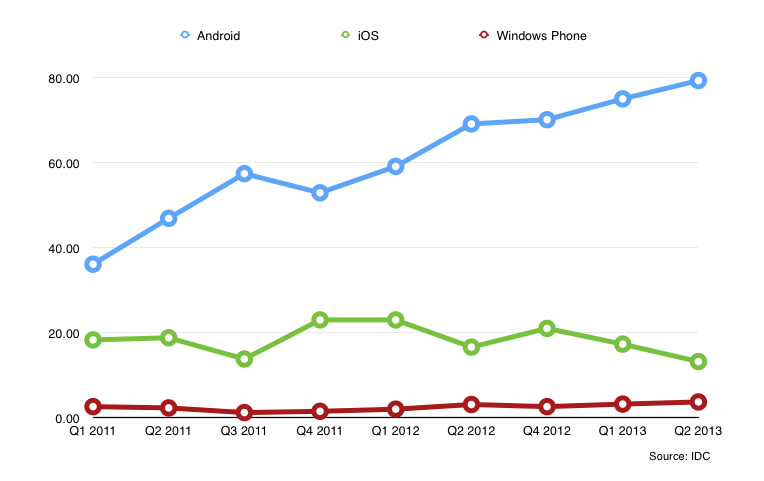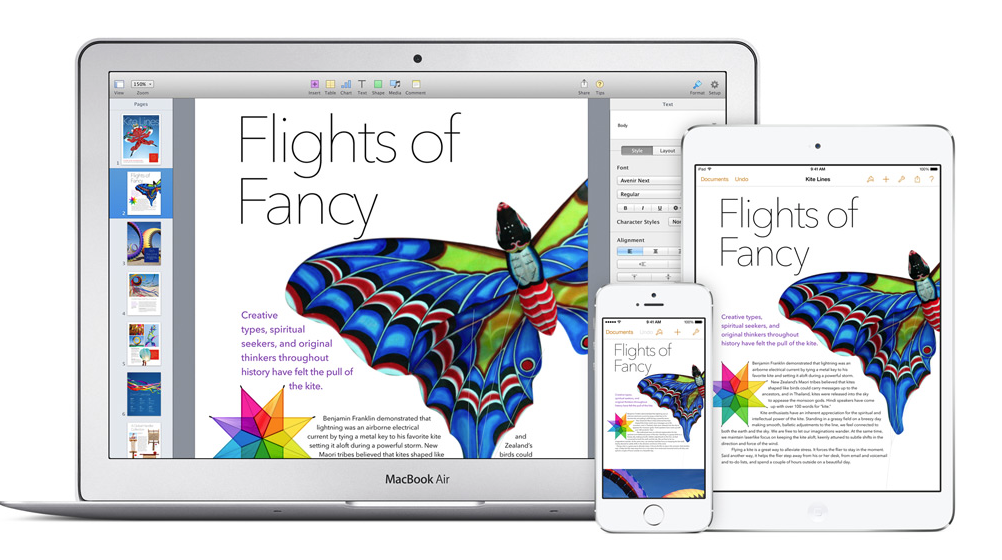For my birthday two years ago, I treated myself to an 11-inch MacBook Air. I bought it with the intention of using it mainly as a writing machine away from home, for my blog and for school. It was (and still is) a terrific little dynamo of a computer, but I eventually grew tired of the burden of managing multiple Macs. Thus, I decided to bequeath the Air to my sister, and committed myself to using my iPad 3 as my "laptop".
I adore working from my iPad, but there is one constant point of friction that at times makes me yearn for my old Air: managing files — in my case, text files — is a pain. It's a problem that certainly isn't insurmountable, but one that throws a wrench into my otherwise seamless workflow.
Like most nerds I know, I use Dropbox to store and sync my data across my devices. All of my important documents are spread across folders inside of folders. Dropbox's hierarchical file system works well for the most part, but it's not perfect. I still have to navigate folders and then use iOS's 'Open In' command to get to the file I want. On an operating system where Apple's purposely abstracted the file system from users (nerds included) in an effort to eliminate complexity, using one effectively bolted on (the Dropbox app) feels weird and, as Rene Ritchie writes, downright archaic.
By contrast, I don't know anyone who uses Dropbox outside of my fellow nerd friends on the Internet. That is to say, none of my "regular" user family and friends have a Dropbox account. In fact, I would go so far as to say that most of them have no clue what Dropbox is or does. Moreover, I'm positive that these same family and friends have no clue (or care, really) about the complexities of iCloud — more to the point, they don't understand iCloud's many idiosyncrasies involving sync.
iCloud For Everything
Given this context, and given how much Apple pushes iCloud as the "everything" solution, I think it would make sense for them to give users a central location on their iOS devices from which to access and browse their documents. Apple's servers will always be the canonical place, of course, but an iCloud Documents app would, in my view, be a more straightforward and easier to understand concept than having to remember which app one used to create a document, and bear in mind that said document can only be opened in the same app. While I feel completely comfortable navigating my myriad of files in Dropbox, I would like a simpler, more forward-thinking way to manage my documents. Ideally, such a solution would use iCloud because, when it works, it works like magic. To that end, an iCloud Documents app for iOS is highly desirable to me. All your documents, all in one convenient place. If Apple sells iCloud as being "the easiest way to manage your content", then it surely should include a one-stop shop for one's important documents.
Here's how I envision such a hypothetical iCloud Documents app working. First, as I stated before, it would house all the user's documents within the app. Apple could design the user interface in such a way that it would automatically separate document types. You could have a toolbar at the top with tabs allowing you to switch to and from text files and Keynote decks, for example. Most of all, though, it would be searchable, as well as offer optional folder creation, a la Photos today. Programmatically, Apple would create a Photos app-type app where, instead of the ImagePicker API, it used a FilePicker API to find and display documents.
In addition to the iCloud Documents app, Apple could also incorporate a dedicated iCloud Documents Web app into iCloud.com. The idea would be the same as on iOS: one central place that keeps all your documents, all up to date. Furthermore, it could be built could so that a user could choose to open, say, a text file in Byword or iA Writer on their Mac, or Notepad if on Windows.
While using iCloud to sync documents would seem to be the perfect solution — I use it for a few things, and it generally performs well for me —, it does have its share of hiccups. For one thing, iCloud can be notoriously unreliable. Another issue is that documents in iCloud are confined to their own silos. iOS itself is similar in this regard, which is great in terms of security, but not so much when it comes to accessing documents.
Yet another stumbling block is iOS's Open In command. It works, but it only works so well. The big problem with Open In, as Federico Viticci writes, is that users end up with multiple copies of files spread across a multitude of apps, which in turn causes headaches when deciding which copy is the canonical version. Again, Open In does work to an extent, but it's messy and far from the ideal solution. I try my best to avoid Open In, because I know its limitations, and, frankly, Dropbox is much easier to use.
You might ask, "What makes a hypothetical iCloud Documents app better than just directly going to the app in which you created the file?" That works, to be sure, but the my point is I believe documents needn't be strewn across a bunch of apps. If you're like me and use your iPad for productivity, there should be one place, one app, where you can see all your documents — and it should be different from Dropbox or Google Drive or whatever. You shouldn't have to remember that you created that parent newsletter in Pages. Rather, you should just be able to open iCloud Documents, tap on the file, and have it automatically open in Pages on your iPhone or iPad. Again, the current methodologies work, but they're far from ideal.
To be clear, The ideas I posit in this piece are not meant to imply that Dropbox is bad, or that I don't appreciate it for what it does. On the contrary, I love Dropbox. My argument is simply that I agree with Rene Ritchie insofar that Dropbox is a system built on the past, whereas iCloud, with all its mystic magic, feels like the future. Steve Jobs himself said as much when he said "the truth is in the cloud". More to the point, Apple gets a lot of flak, and rightly so, for not doing Internet services well. I feel iCloud has a lot of good points, but right now it isn't living up to its full potential. And, frankly, I feel, with all the talk of past and future, that a solution built on iCloud is better suited than Dropbox for the long-term, indispensable as Dropbox may be at this point.
I so enjoy working from my iPad not only because the tablet, hardware-wise, is so thin and light and power-sipping, but because iOS is so powerful. Thanks in no small part to third-party developers, the app ecosystem is rife with desktop-class apps that are so good that I don't require a Mac to get the majority of my serious work done. Add in iOS's one-app-at-a-time approach, which I find refreshing and which helps keep me focused, and the iPad truly is one terrific productivity device. As a writer, I couldn't be happier that my iPad's become my laptop. On the whole, the experience of getting real work done on my iPad has been awesome. That I (and others) are able to do so is a testament to just how powerful Apple's made the iPad and iOS. The reality is that, as a nerd, I get by fine with Dropbox. However, just because one solution works for me doesn't mean Dropbox is the answer, or that iOS and iCloud are above improvement. On the contrary, this piece (hopefully) illustrates that iOS and iCloud can be much better at certain things, like document management.
It's only one piece of a very complex puzzle, but it's my opinion that an iCloud Documents app would be a big step in solving the problem of how to directly access files on a system where, at least on the surface, the classic file system doesn't exist. My hope is that sooner or later, Apple will give users direct access to documents much in the same way Photos gives direct access to photos, and Passbook gives direct access to movie tickets, boarding passes, and so on. Such access would make working from my iPad orders of magnitude better, and make me quit longing for my old MacBook Air.







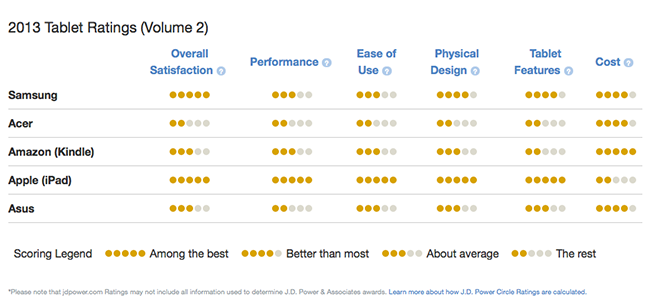
 J.D. Power caused a bit of a stir today when it put out a new survey in which Samsung had displaced Apple as the leader in U.S. tablet satisfaction. While the headline of the McGraw-Hill Financial unit’s
J.D. Power caused a bit of a stir today when it put out a new survey in which Samsung had displaced Apple as the leader in U.S. tablet satisfaction. While the headline of the McGraw-Hill Financial unit’s 

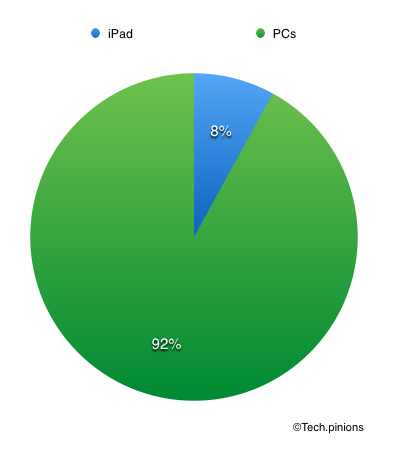

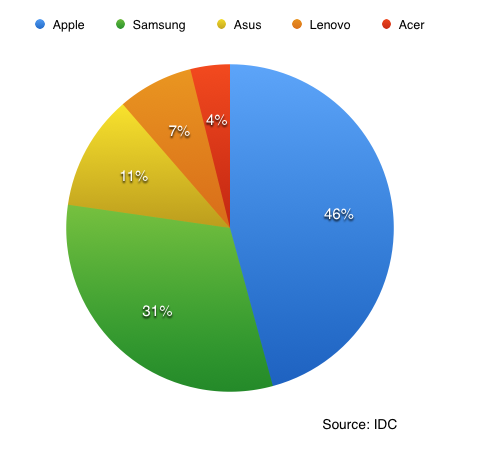
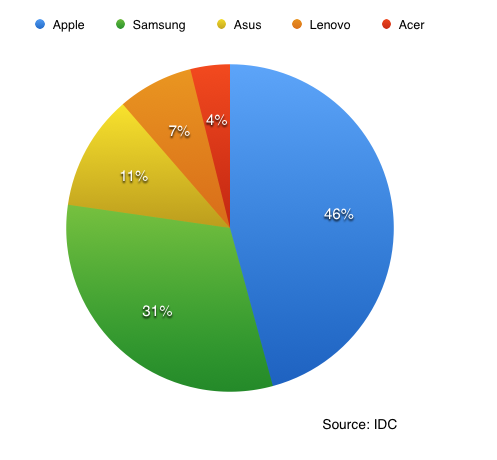

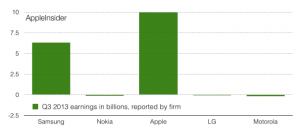 For example, Apple’s sales of 33.8 million iPhones
For example, Apple’s sales of 33.8 million iPhones 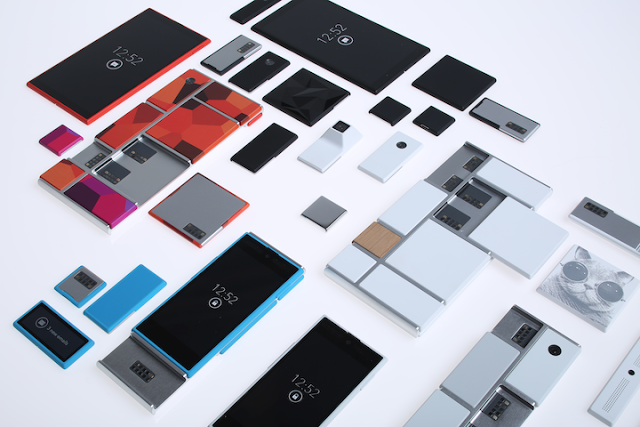

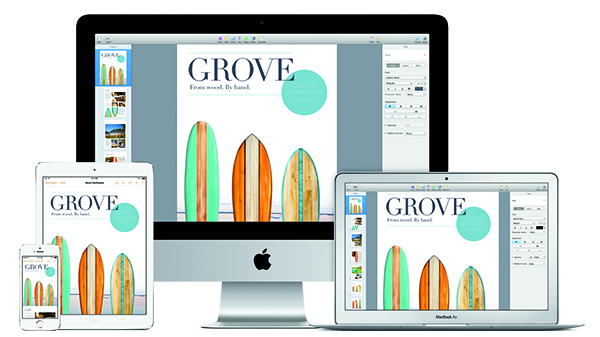

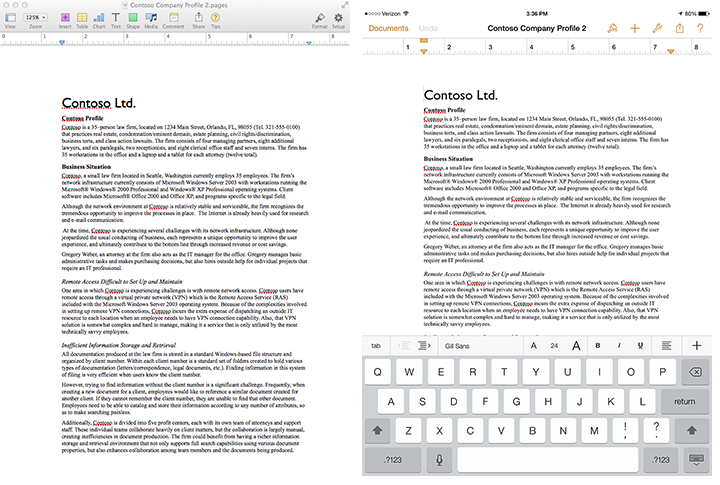
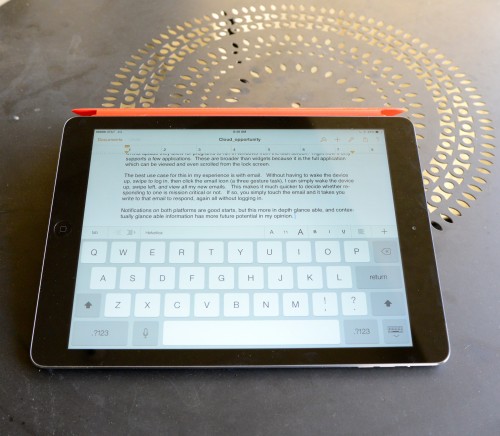
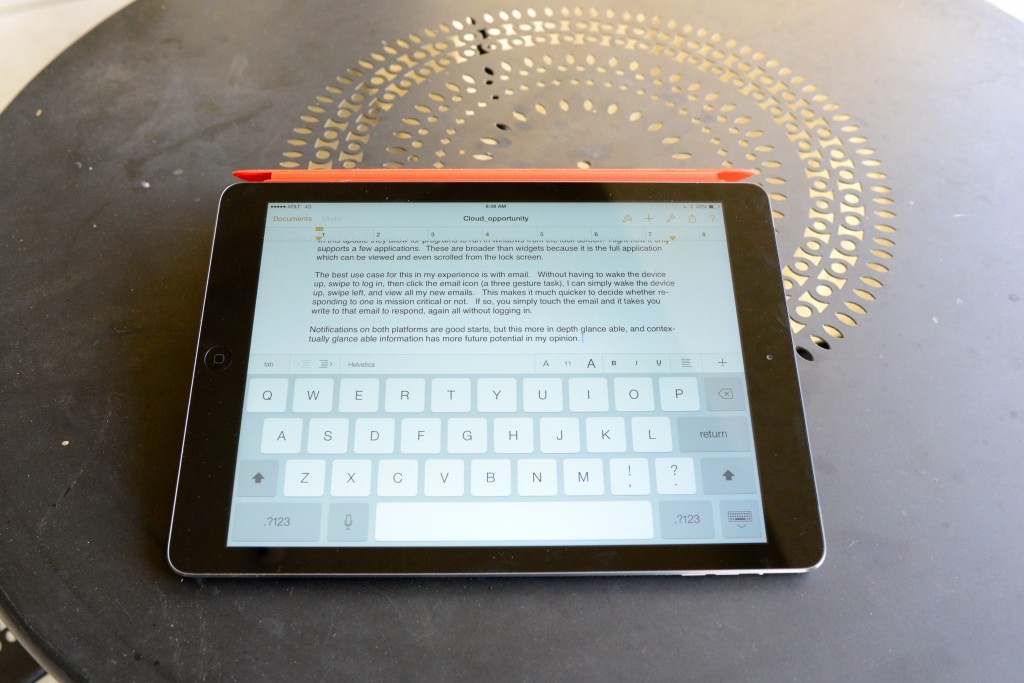
 )) iLife opens the door to a creative world unparalleled on any other tablet platform. Where iWork may have a competitor on other platforms, iLife does not. When it comes to the creative arts, the iPad is unparalleled from a software standpoint.
)) iLife opens the door to a creative world unparalleled on any other tablet platform. Where iWork may have a competitor on other platforms, iLife does not. When it comes to the creative arts, the iPad is unparalleled from a software standpoint. 
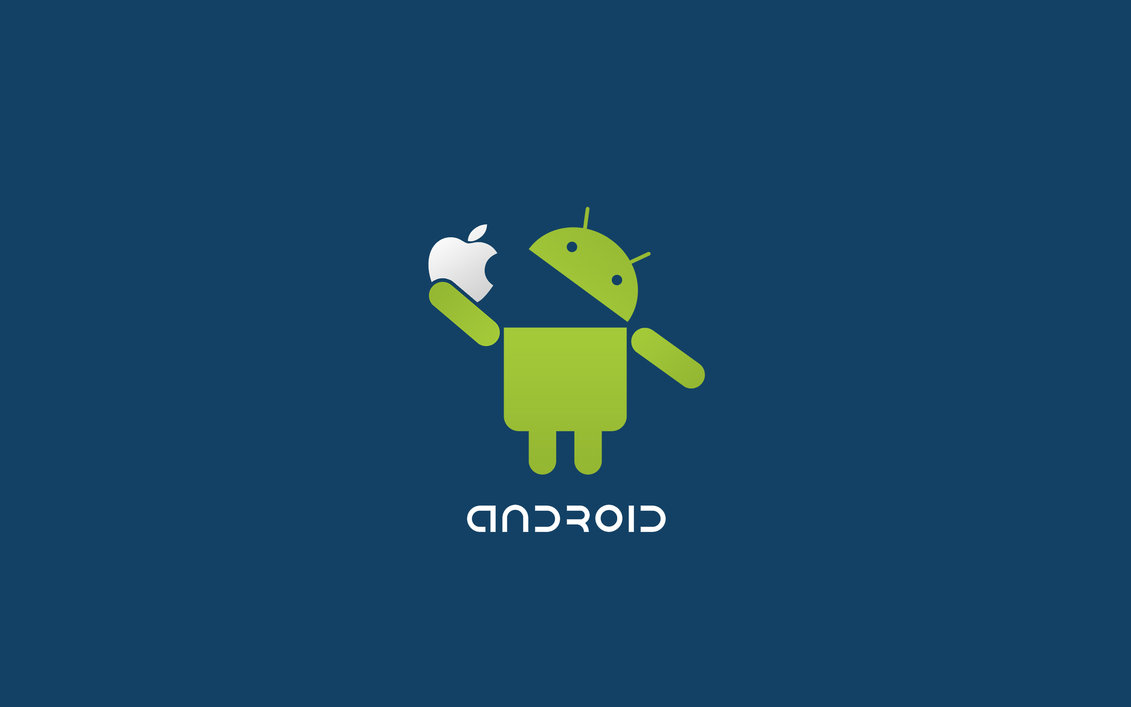


 Phones? No way. Too small.
Phones? No way. Too small. Windows? Not likely. First, Microsoft is still not making a true tablet. More fool they. Second, Microsoft’s tablet products are woefully behind in the app software market.
Windows? Not likely. First, Microsoft is still not making a true tablet. More fool they. Second, Microsoft’s tablet products are woefully behind in the app software market. I haven’t seen any one talking about this, but if the current generation grows up using Apple iPads in school, what long-term effect will that have on their computing preferences?
I haven’t seen any one talking about this, but if the current generation grows up using Apple iPads in school, what long-term effect will that have on their computing preferences?
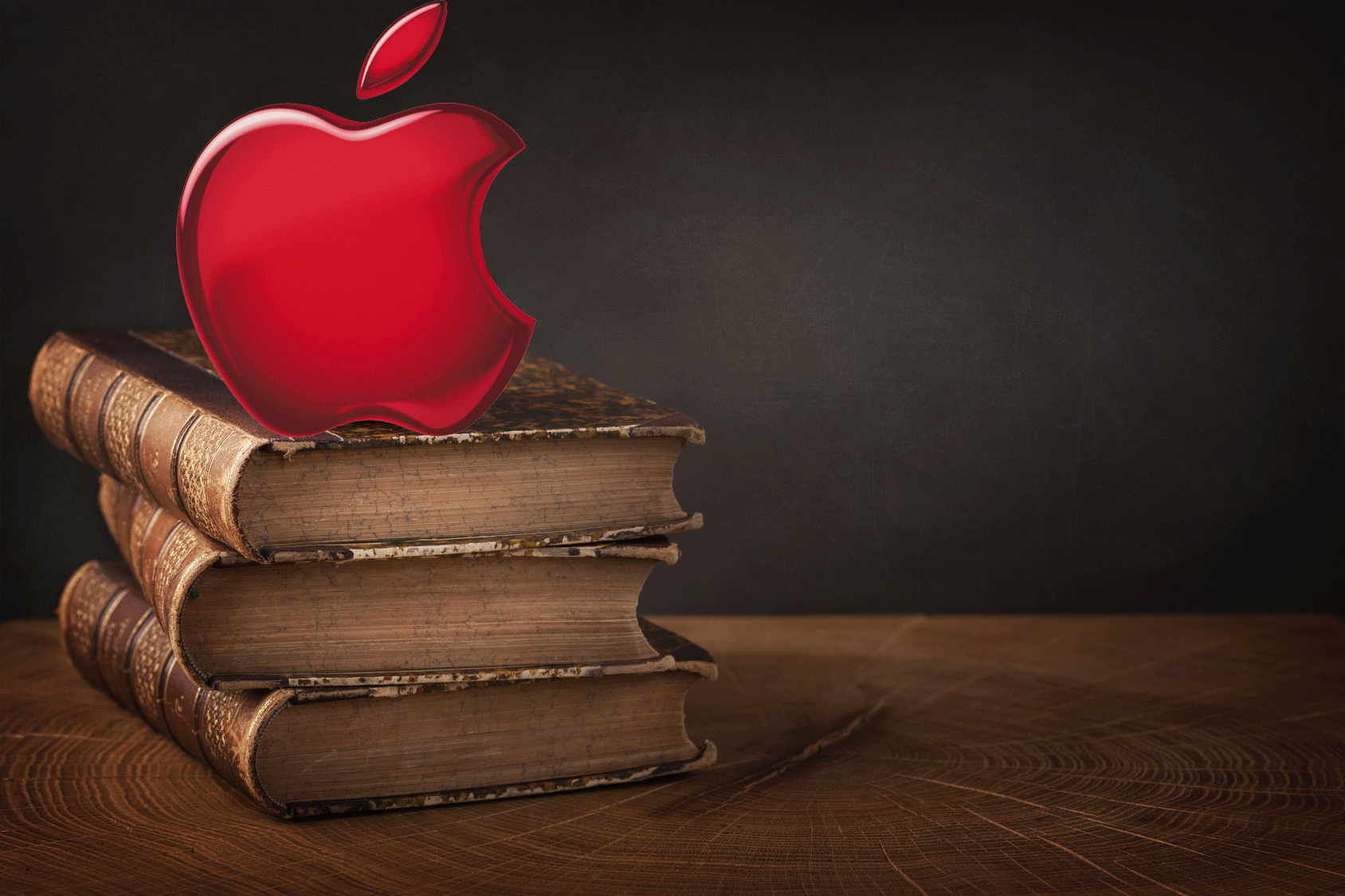



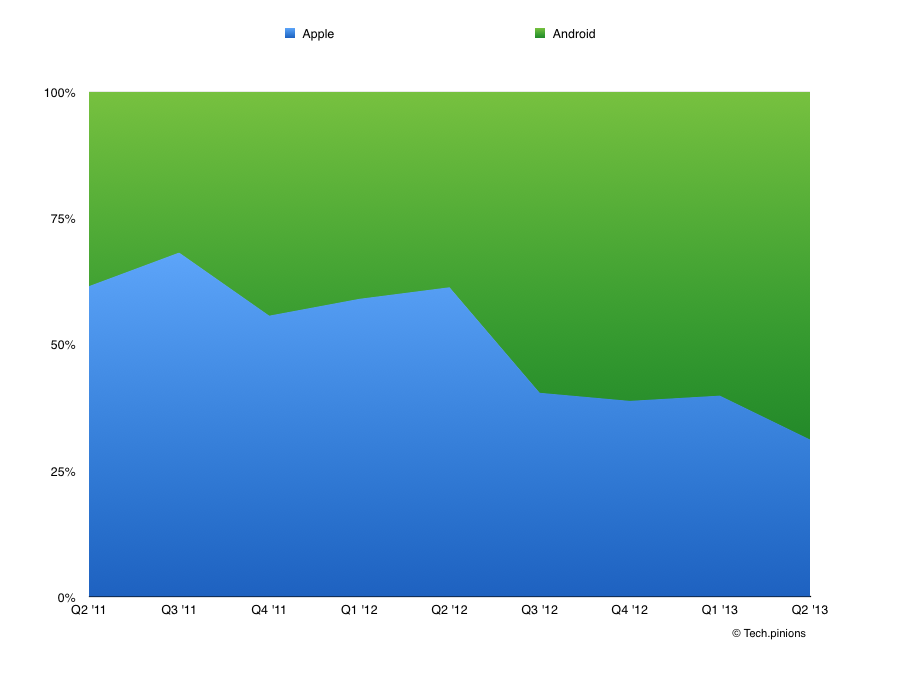
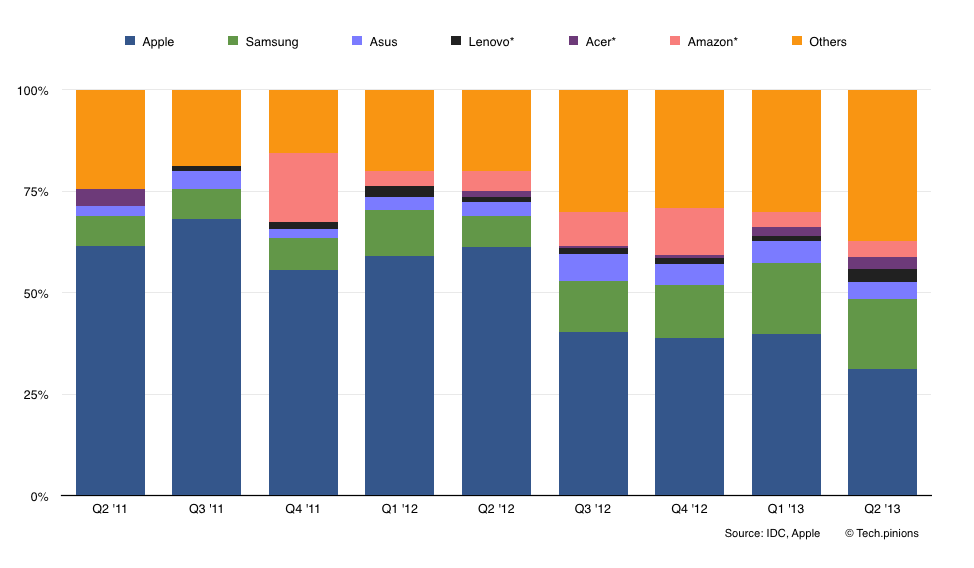 ))
))